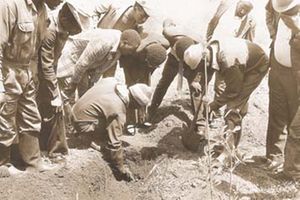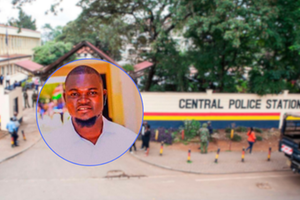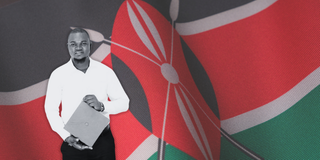
Teacher Albert Ojwang who mysteriously died in a police cell.
What happened to Stephen Mbaraka Karanja in 1987 has many parallels with the case of Albert Ojwang that is currently unfolding in the public space. When they failed to locate him in any police station after his arrest in Nairobi, Karanja’s family made a habeas corpus application in the High Court.
Police responded by telling the court that Karanja had died of gunshot wounds that he sustained when police shot him to prevent his escape from lawful custody. Without informing his family, which only learnt about the death in court, police then buried Karanja’s body at the Eldoret municipal cemetery, far away from where he had been arrested.
The case descended into a farce when, to comply with a court order that required the exhumation of the body, police dug up 19 graves at the cemetery, none of which was for Karanja. Justice Derek Schofield who heard the habeas corpus application described the police conduct as “callous in the extreme.”
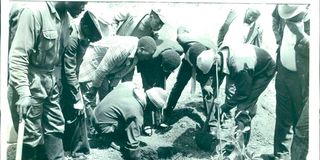
Police dug up 18 graves on June 25, 1987, but failed to find the body of Kiambu farmer Stephen Mbaraka Karanja who was shot dead and buried secretly by CID officers . The search for Karanja took place at the Eldoret municipal cemetery.
The face of the police action in the Karanja case was the Director of the Criminal Investigation, Noah arap Too. It is Too who owned the police conduct in the case, swearing the affidavit that made the shocking disclosure of what had allegedly happened. Justice Schofield attempted to cite Too for contempt, for failing to produce the body.
However, the judge discovered that the policeman was politically protected. Acting on orders from above, Chief Justice Cecil Miller removed Justice Schofield from the case, transferring him to Meru in what was seen as a political rebuke. Rather than go to Meru, Justice Schofield, a British national, resigned and left the country.
The secretive Mwakenya trials that begun after the 1982 coup attempt, had preceded the Karanja case. While the secrecy that always enveloped those cases made it difficult for the public to follow the trials, that secrecy was also a warning that something was amiss, and that Kenya had descended into an authoritarian abyss.
The shameless interference with the work of Justice Schofield confirmed the new reality that an independent judiciary was undesirable. With the unprecedented media publicity that it received, the Karanja case blew open the barrier of secrecy, revealing the abuses and deeply embarrassing the government of President Moi. The case came to be seen as the emblem of those abuses.
Karanja was a criminal
Like Ojwang, who was unknown before he was killed, Karanja was also unknown to the Kenyan public. While the media said he was a farmer and a businessman, the police said Karanja was a criminal. There was no dispute, however, that Karanja was active in the anti-Kanu movement for which he was arrested. The characterisation of Karanja as a criminal, together with the tale that he met his death while trying to escape from lawful custody, was an act of victim blaming, a suggestion that Karanja probably deserved whatever fate befell him.
It was calculated to downplay the fact that Karanja had been arrested in connection with his political activities. Because police lied about why he was arrested and how they had dealt with Karanja’s body, there is no reason to believe that they had told the truth about how he died.
Similarly, police have downplayed the fact that Ojwang was arrested for his political activities while lying about the circumstances surrounding his death, initially falsely asserting that he committed suicide.
This dishonest and vile allegation was meant to achieve three objectives, first, to paint Ojwang as a villain because of the moral opprobrium associated with suicide, second, to absolve the police of the inescapable responsibility that they bear for his death and, third, to sanitise this death of its political links. Police have used the parliamentary hearings into the death of Ojwang for a continuation of those lies, with different formations suggesting, without evidence, who should be treated as suspects in the case.
It has become apparent that, just like Too in the Karanja case, the Deputy Inspector General, Eliud Lagat, enjoys political protection that has shielded him from the level of scrutiny that his role in the matter should naturally attract.
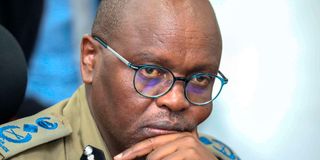
The Deputy Inspector General of the National Police Service Eliud Lagat at the Bunge Towers Nairobi on November 7, 2024.
Bernard Njinu was the Commissioner of Police when Karanja was killed in police custody. However, it is Too, rather than Njinu, who took responsibility for explaining what had happened and who eventually got into trouble on behalf of the police. This is because Too, rather than Njinu, was the political enforcer in the Moi system. While as Inspector General, Douglas Kanja, is the head of the police, he is not the political enforcer in the Ruto system.
That role has fallen to Lagat, his deputy. It is Lagat who was on the receiving end of Ojwang’s alleged media activities that the policeman found offensive enough to require the extraordinary mobilisation that had Ojwang arrested in one part of the country and transferred to another where he met his ill-explained fate.
Political links
The framing of this case has sanitised it of its obvious political links. Whatever complaint Lagat had against Ojwang, it was not “personal”, as in the realm of defamation, but rather political, the kind that would have been labelled as “sedition” during Kenya’s one-party era. Without a correct framing, it is impossible to explain the moving of mountains in this case. The political nature of the case is also probably the only way to explain the fatal violence that was meted on Ojwang while in custody.
If the Kenyan state had acted against Ojwang a few weeks ago, rather than only last week, that action would probably have been an abduction, the kind that followed the Gen Z protests last year. However, President Ruto announced an end to abductions, a response to the strong resistance by the public.
If Ojwang had died at a black site following an abduction, rather than in a police cell after an arrest, it would have been difficult to link the police with this crime. The death of Ojwang demonstrates the fact that the fight to end abductions remains vital in the country. How much more difficult would it be to hold security forces accountable for their conduct in black detention sites if is this challenging to do so in official police cells?
With a consistently poor human rights record that had dipped during the presidencies of Moi, Uhuru Kenyatta and now Ruto, Kenya has had relatively few custodial deaths. While not discounting some that may not have been as high profile as that of Karanja before, the custodial death of Ojwang is the first one since that of Karanja 38 years ago.
The unusually high levels of outrage that this death has attracted, is comparable to the outrage that met Karanja’s death in 1987. The public was outraged by the death of Karanja because it finally confirmed the secretive state terror during the Mwakenya years.
Similarly, the death of Ojwang has elicited outrage as it confirms the state terror that has taken place since Gen Z protests. In his ebullient manner, and even in the clearest of cases, President Ruto has so far found ways of explaining away that terror by denying its existence, downplaying it or blaming the victim.

